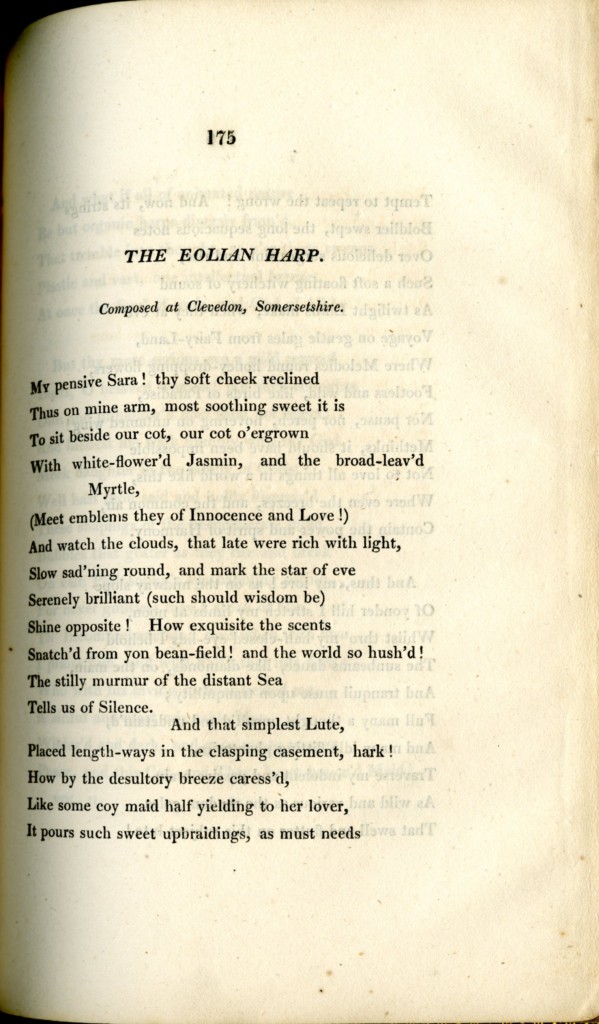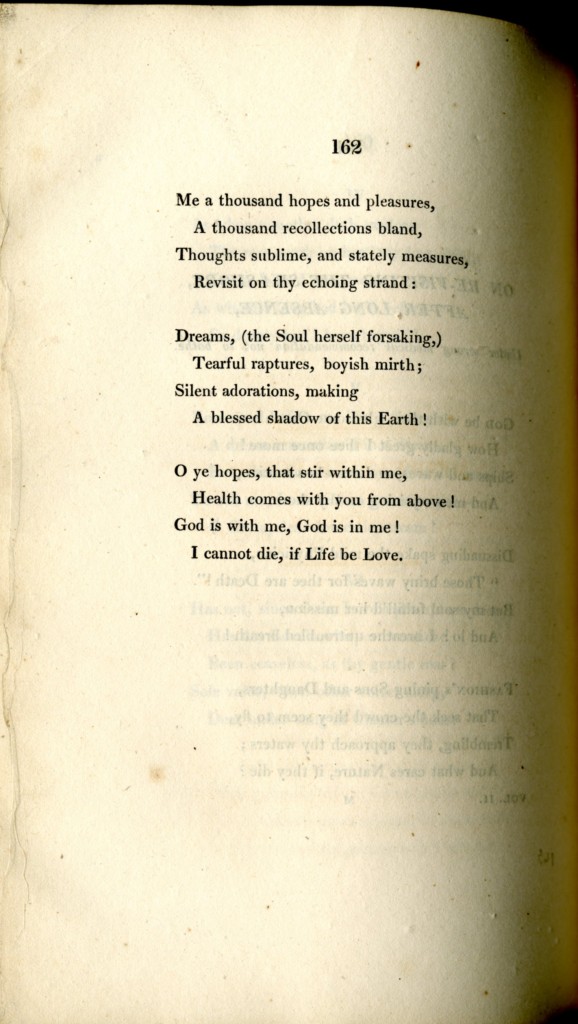Samuel Taylor Coleridge
Poems (second edition, 1797)
Sibylline Leaves (first edition, 1817)
Christabel; Kubla Khan, a vision; The Pains of Sleep (first edition, 1816)
Rare Item Analysis: Coleridge’s Original Intentions Seen through Rare Editions of His Poetry
by Karoline DaVee
The purpose of this post is to share what I found after examining three rare editions of Samuel Taylor Coleridge’s work, found in the 19th Century Collection of Baylor University’s Armstrong Browning Library. By analyzing a first edition Christabel; Kubla Khan, a vision; The Pains of Sleep (1816), a second edition Poems (1797), and a first edition Sibylline Leaves (1817), I obtained a unique perspective on the original intentions of Coleridge’s poetry and how his conversational poetry developed and transitioned through the years. Although Coleridge’s unconventional poetry was often criticized during his lifetime, he was one of the originators of the conversational poem genre, which inspired several authors of the Romantic Period.
In the second edition of Poems (1797), Coleridge originally published one of his more conspicuous poems as “Composed at Clevedon.” Later when he published Sibylline Leaves in 1817, Coleridge altered the title of his poem from “Composed at Clevedon,” to “Eolian Harp.” This permutation between the two books of poetry reveals Coleridge’s original intentions, and the development of his conversational poetry. Four major themes of conversational poetry include: emphasizing the author’s thoughts (meditative), the circular or boomerang motion of the poetry, typically in blank verse form, and sense of community in the poetry. So, when Coleridge renamed the poem as he republished it years later, his goal was to emphasize considerable themes in conversational poetry. An Eolian harp is mentioned at the beginning of the poem, so naming the poem “Eolian Harp” draws the reader’s attention to the meditative mode of the poem. As the poem is being read the audience is aware of the author’s thoughts, such as him noticing the Eolian Harp as it is being played by the wind. The poem’s blank verse and circular motion (Coleridge begins by talking about his wife and their cot, and ends the poem discussing those two things) also reflect the conversational style. In “Reflections on Having a Place of Retirement” Coleridge leaves the Latin note “Sermoni Propriora” which translates, “more suitable for conversation.” The note on this poem shows that Coleridge was already in the early stages of developing the new genre of conversational poetry in 1797, and that he intended his readers to begin depicting the unique form of that type of poetry.
On page 162 in the first edition of Sibylline Leaves, Coleridge describes the poems to follow as “Meditative Poems in blank verse.” Through this we can decipher that Coleridge was beginning to define the conventions of conversational poetry. The way in which Coleridge structured the poems also emphasizes his intent to define the new genre. In Poems, Coleridge places “Eolian Harp” on page 175 and “Reflections on Having a Place of Retirement” on page 178, he also places “The Nightingale” on page 204 and “Frost at Midnight” on page 210. Each of these poems follows the form of a conversational poem, and the proximity between each poem only emphasizes the patterns of themes between each.
After analyzing the first edition of Christabel; Kubla Khan, a vision; The Pains of Sleep, I was enabled to see Coleridge’s original intentions in publishing the three poems together. Often Kubla Khan, one of Coleridge’s most famous works, is published in many different capacities. For example, in my Romantic Poetry course we use an anthology in which the author has repositioned Coleridge’s work between other Romantic authors, changing its original format. The placement of the poems in the initial context is very important in understanding Coleridge’s original intent. “The Pains of Sleeping,” is positioned right after “Kubla Khan; Or a Vision in a Dream.” Coleridge notoriously wrote “Kubla Khan; Or a Vision in a Dream,” after being inspired by a vivid dream while taking the drug opium. While “The Pains of Sleeping”, is about how fanciful nightmares can leave the sleeper in pain, and the lack of blame the sleeper should have after waking. Since the original edition had “Pains of Sleep” directly after “Kubla Khan,” it shows that Coleridge is deliberately explaining that he is not responsible for the controversial oddities in “Kubla Khan.” He is simply describing what he saw in his dream, and that this dream has caused him extreme guilt and pain.
These rare editions of Coleridge’s work give us insight into the original intent of his poetry, and the transition of his conversational poetry throughout the years.
   |
   |
